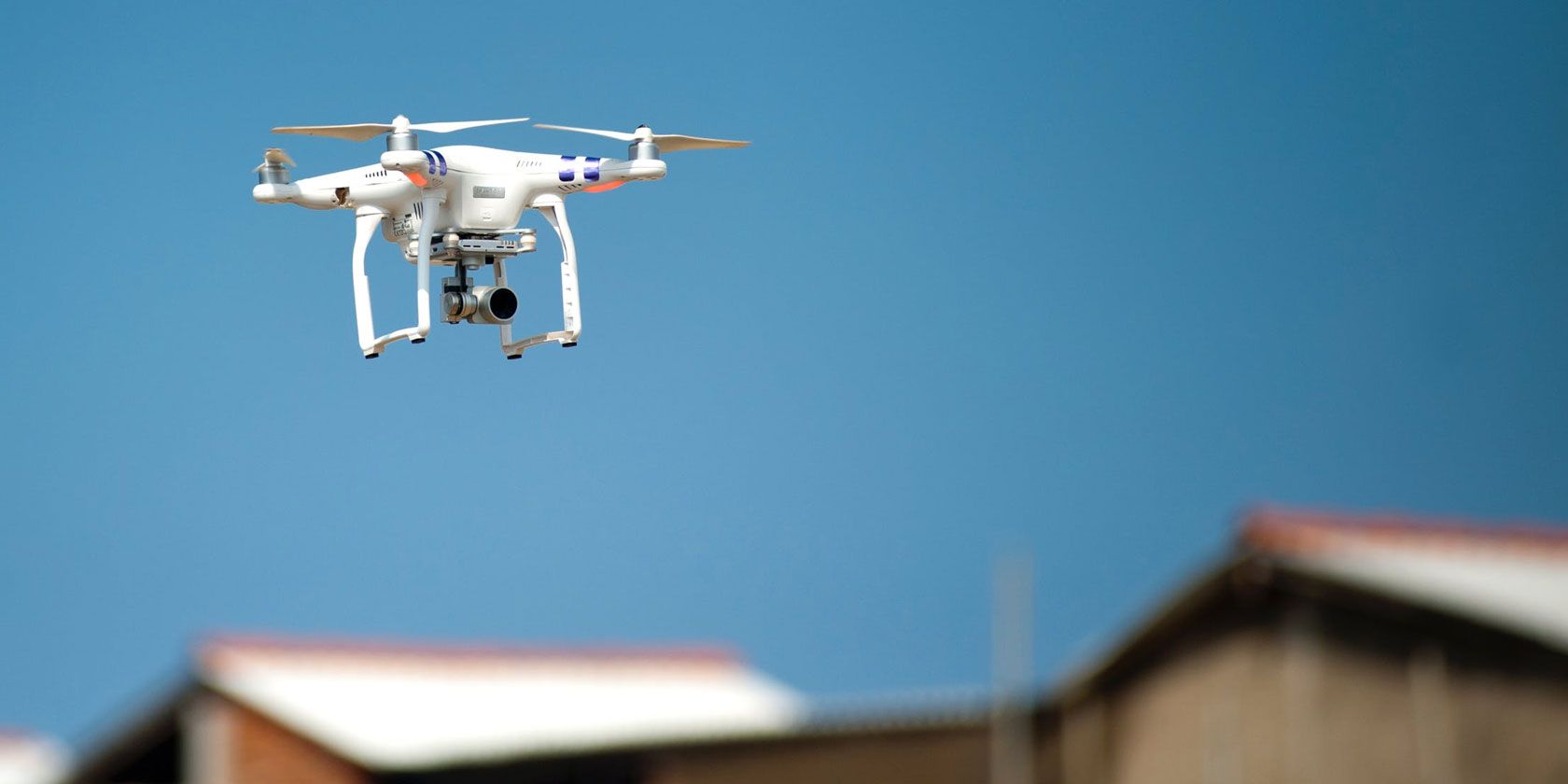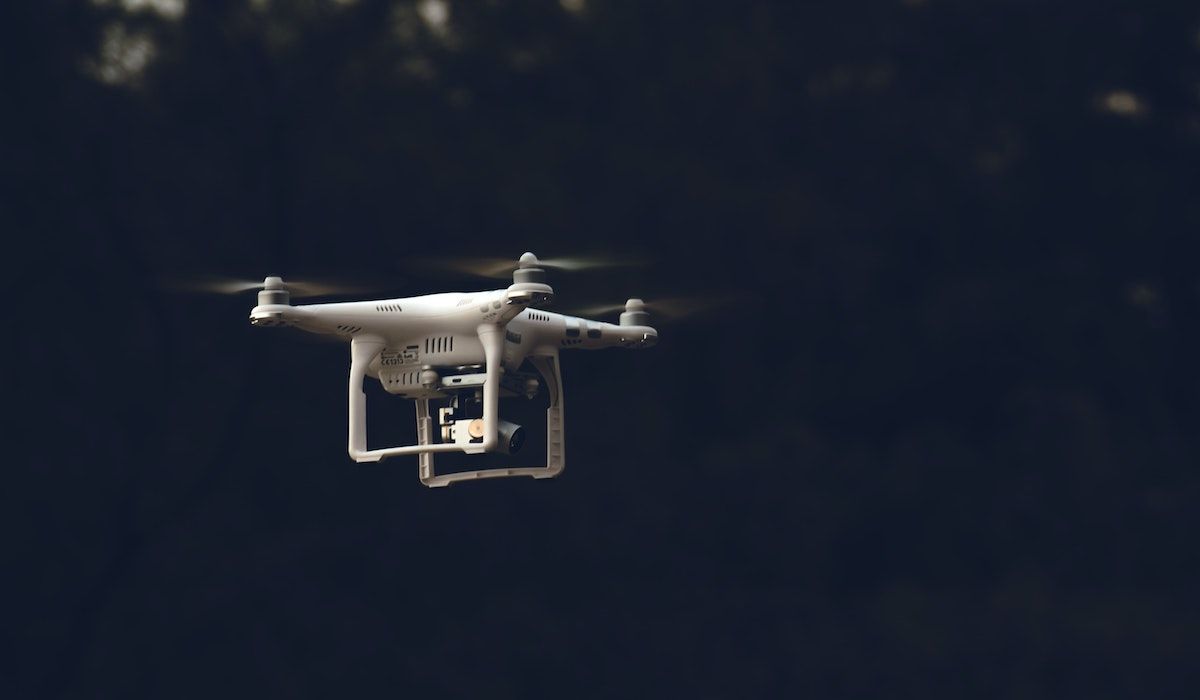There's a real buzz around about drones. And while it's true that drones are set to transform the future in amazing ways, what we can't forget is that drones pose a serious risk to security and privacy. You need to know how to stop drones from flying over your house. Or, maybe you might wonder how you can disable or jam a drone.
Fortunately, there are several methods of protection against drones.
1. Anti-Drone Drones
In 2015, Malou Tech gave their first demonstration of an anti-drone drone: a bigger, badder drone equipped with a huge net meant for capturing and disabling smaller drones. It could be an effective method, but in many cases, something more subtle is needed.
That's why the Rapere project turned a lot of heads, offering a unique solution for interfering with drones. Rather than using a net, it proposed dropping a string that could entangle drone rotors. This meant faster and more precise strikes at target drones.
Unfortunately, it seems that project is no more, but you can expect more ideas like this to pop up in the future.
2. Anti-Drone Birds
Drone-intercepting drones may be practical. But if you want to kick it up a few notches, then you'll probably want to look into anti-drone birds. As The New Indian Express highlights, these eagles have been trained to tackle drones out of the sky.
In fact, some of these birds can even snatch drones and carry them all the way back to their trainers. And in case you were worried whether this process is harmful to the birds, rest assured, that the birds are intelligent enough to pull it off without so much as clipping a talon.
These birds are only available for authorities in specific locations. But it's conceivable to expect other countries to follow suit in some form or another.
3. Anti-Drone Jammers
If you need a method that's even more subtle than physical interception, then there are ways to jam a drone signal. The Anti-UAV Defense System (AUDS) is one such solution. It scans the skies for drones and jams their control signals using its own high-powered radio signal.
Or, if you need a more portable option, you could look into the DroneDefender. This is an accurate anti-drone rifle that uses targeted radio signals to disrupt drone controls. It works much in the same way that the AUDS operates. It currently has a range over 1,300 feet, but may be able to reach even farther in the future.
But there's one good reason not to use these kinds of devices: radar jammers may be illegal where you live. Don't even think about buying one of these until you've made sure that you won't be arrested for it.
4. Drone-Blinding Lasers
Anti-drone lasers are somewhat like anti-drone jammers. Except instead of interfering with a drone's control signals, they interfere with its camera.
Digital cameras use a light sensor to pick up visual information, so if you overload that sensor with too much light, you can blind it.
Have you ever taken a video from inside your house and walked out the door? For a few seconds, everything becomes really bright and white. That's basically how a blinding laser works. All you'd need is a low-powered laser pointer and a good aim.
But be careful. It's not legal to shine lasers into the sky because you might accidentally blind an airplane pilot. You really need to take caution when playing around with lasers like this. You could try a short-range laser if you really want to take this option, but there are still risks involved, and we advise against it.
5. Drone Detection Systems
Drone detection systems are employed to track and counter unmanned drones. They work by sending out a signal and receiving back the reflection from the drone. From this, they can calculate the accurate position of the drone.
There's a wide variety of drone detection systems to choose from, all with different features and working methodologies. There are Jammers, as we saw from above, which work by emitting electromagnetic waves that cut off the signals between the drone and its operators.
Then, there's a class of detection systems called Acoustic Sensors, which detect a drone by picking up on the noise produced by them.
For instance, Dedrone, a leader in anti-drone technology, recently had their DedroneTracker certified by the UK Center for Protection of National Infrastructure (CPNI), an authority in personnel and physical protective security, for its drone detection capabilities.
With a combination of features based on machine learning, image-recognition, and adaptability with third-party sensors, the DedroneTracker can detect RF, Wi-Fi, and non-Wi-Fi drones easily and make your environment secure.
6. Drone Hijacks
One important thing to know about drones is that they'll never be 100 percent impervious to hacks, much in the same way that computers and mobile devices will never be completely protected. Keep that in mind if you ever plan on buying a drone of your own.
The thing is, this kind of weakness can always be exploited, which was proved when a security researcher demonstrated the hijacking of a $35,000 police drone from up to one mile away. If a government drone can be disabled like that, it's reasonable to assume that most consumer-grade drones won't stand a chance either.
That's not to say that you should try hijacking drones, but in the future we may see disruption devices that utilize these kinds of vulnerabilities to knock drones out of the sky and maintain the peace.
7. Drone Surveillance Laws
If all else fails, the last thing you can do is to push for laws that protect the privacy of citizens against drones. As the Huffington Post elucidates, bills have been popping up ever since the drone craze really took off back in 2013, and some have even been passed into law. But we still have a long way to go.
In 2019, both the US and the UK brought in new laws about drone flying. In the US, drones must be registered to an owner before they are used if they weigh more than 250 grams.
Permission needs to be obtained before drones are flown in controlled airspace. And drone pilots must pass a test before they can fly. This means that it should be easier to trace who a drone belongs to and who was flying it if it causes a problem.
In the UK, drones over 250 grams also need to be registered and pilots need to pass a theory test.
The good news for privacy advocates is that both sides of US Congress agree and want to "prevent high-tech window-peeping." Drones with cameras may be covered by laws like the Data Protection Act (DPA).
Groups like the Uniform Law Commission (ULC), reported TechCrunch, are working to create laws regarding drones which balance privacy concerns with the potential benefits of drones for search and rescue, delivering medical supplies, and other important functions. These laws are being frequently updated as drones become more popular.
Ideally, a middle ground will be found, but until that happens, there's not a lot you can do about drones threatening your privacy as a private citizen. Laws may end up being the only effective defense.
Protecting Your Privacy From Drones
Plenty of people are concerned about how drones could impact their privacy. Yes, there are a few methods that can stop a drone. However, they are mostly suited to military or large organizations, not to individuals trying to protect their homes.
The best defense for everyday folks is to lobby for laws which restrict the use of drones.




